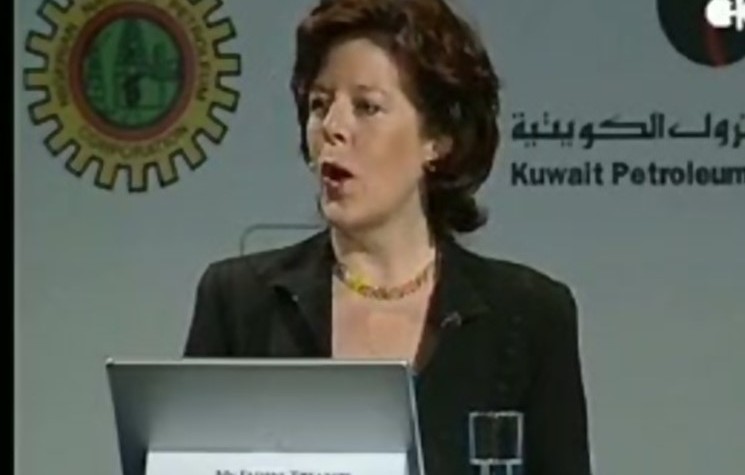Oil prices remain weak as over-supply situation worsens

By Eithne Treanor
The over-supply on the oil market just got worse this week when the Energy Information Administration said that American supplies were at a higher level than seen in the past 80 years. In early trading on Friday, Brent crude was priced below US$49 with WTI close to US$47 a barrel.
The oil price jumped temporarily at the end of the week on news that Saudi Arabia’s king, Abdullah bin Abdulaziz al Saud had died. The king had recently been hospitalised, so the news was not a big surprise.
The former Crown Prince, his half brother, now King Salman said that he would maintain energy policy and ensure the leadership transition in the worlds biggest oil exporter will be a smooth one. Analysts expect that the oil minister, Ali Al Naimi will remain in the cabinet for the time being.
The state of the oil market was in focus as global leaders gathered for their annual meeting of the World Economic Forum in Davos. The OPEC Secretary General, Abdalla El-Badri defended his organisations position and said he expects the market to rebound.
He reiterated that a 50 per cent drop in price was not supported by the fundamentals. He said “there is an over-supply, there is a lower demand, but OPEC did not increase its production for the last 10 years.”
He made it clear that his members did not cause this over supply situation. He said that the non-OPEC producers added more than 7.5 million barrels and as they had no intention of cutting back, then the ministers felt it was not OPEC’s role to bail them out.
He said he knew this low price would impact the industry but added that he believed “the price will rebound and we will go back to normal very soon.”
The chief economist of the International Energy Agency, Fatih Birol said, “the current US$45 is a temporary phenomenon and we may well see by the end of this year an upward pressure on the prices again.” He also said that that he expected a reduction in production “from the high cost areas” and added that if this merges with a period of higher demand, it would have “strong implications for the market and for the prices.”
The CEO of the Italian oil company Eni, Claudio Descalzi said he believed this lower price was a cyclical and temporary situation and said the market needed a stabiliser like OPEC, suggesting it was like “the Central Bank for oil.”
The CEO of Saudi Aramco, Khalid Al-Falih said that the current situation was a worry to him and that we needed to remember “the market has been propped up to a significant degree by geopolitical fear that was fueling financial investors.”
He added that we must watch the impact of the strong dollar, monetary stimulus in the world as well as the state of the financial market and the investment flows that have “contributed to acceleration of the collapse of oil prices.”
He said he felt any rebound in the situation would take time and added that “the market will have to balance itself,” when we see higher demand later this year and in the years to come. He said that Saudi Aramco was exercising more fiscal discipline and cutting where possible, while investing in the longer term and “building resilience” in the future and also looking at growth in non conventional gas.
He hinted a note of caution and warned that key investors who expected higher oil prices, including Saudi Aramco have “been shaken to a large degree” and said that investors and companies will be careful “before submitting large sums of money to the mega-projects in the oil and gas industry.”
As some mega projects scale back and other continue in the US, crude oil inventories were up by more than 10 million barrels mid month to now reach 397.9 million barrels. This is the highest January level on record in terms of weekly data going back to 1982 and mainly due to an unexpected drop in refinery utilization.
The rise in stockpiles was way above a conservative analyst projection of around 2.7 million barrels. The gasoline price at the pump is lower and consumers are enjoying a lower price for oil.
The global economy remains sluggish with China’s HSBC/Markit flash manufacturing Purchasing Managers Index just below the essential 50-point range, but higher than December’s figure. The PMI is an indicator of growth and signals the difference between contraction in the economy or signs of improvement. Meanwhile China’s crude oil imports from Russia were up to a record 876 thousand barrels a day as the country took advantage of cheaper low spot prices to build storage.
The low oil price appears to have steadied for now, but more non-OPEC players are feeling the pinch. The oil minister from Oman, Mohammad bin Hamad al-Rumhy was the latest to voice his criticism at a conference in Kuwait this week.
“I fail to understand how market share can be more important than revenue,” Rumhy said, breaking his usual diplomatic support for OPEC. Iran and Venezuela continue to voice criticism about the damage being done by the lower oil price.
The key players in the oil industry say we can expect the oil price to rise in the future as demand grows and as they look to the long term. Further uncertainty in the market will not be welcomed. A short, sharp shock may have been managed, but no one seems to know for how long and at what price producers and oil service providers can handle low prices.
Comments (0)